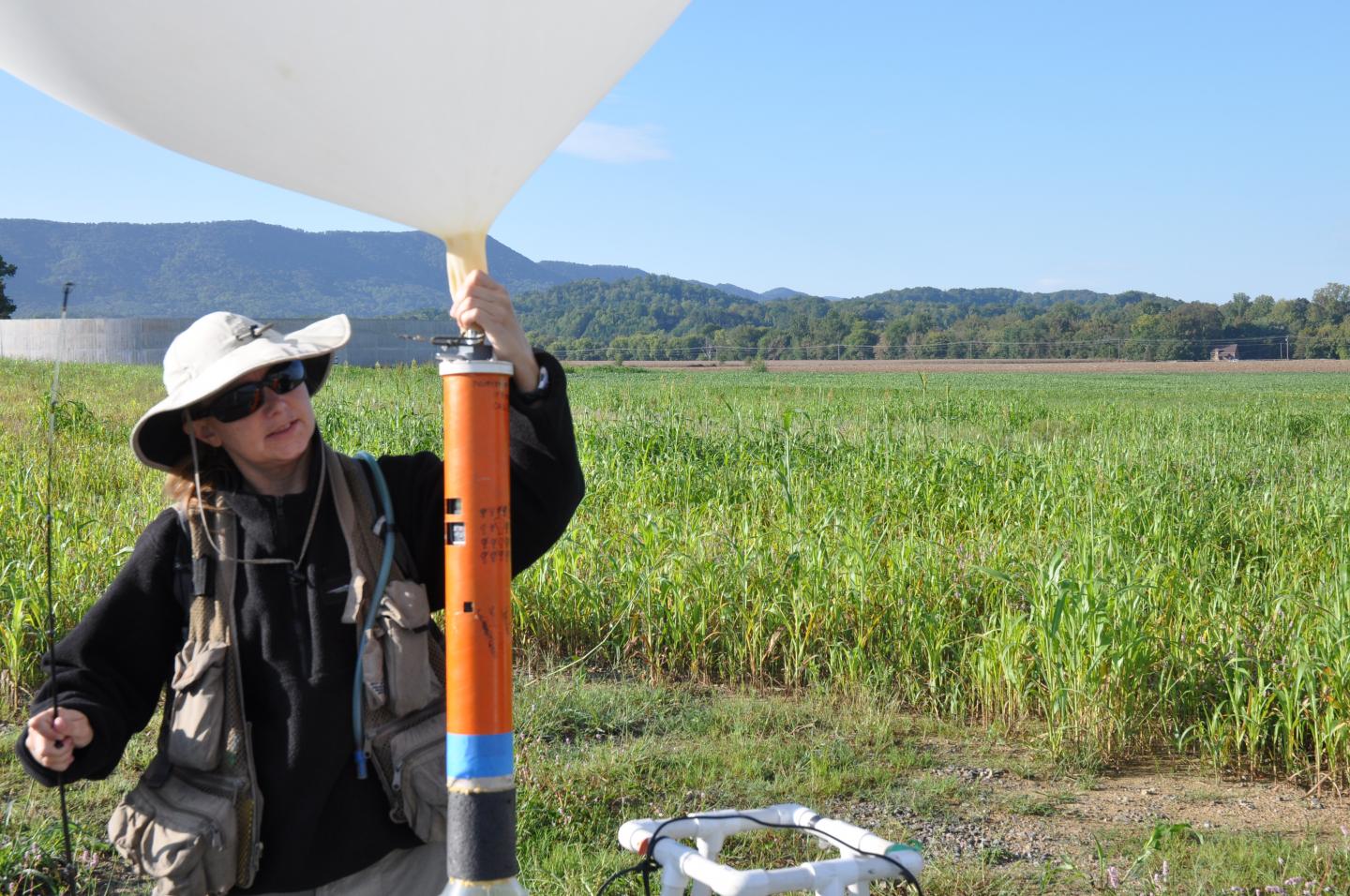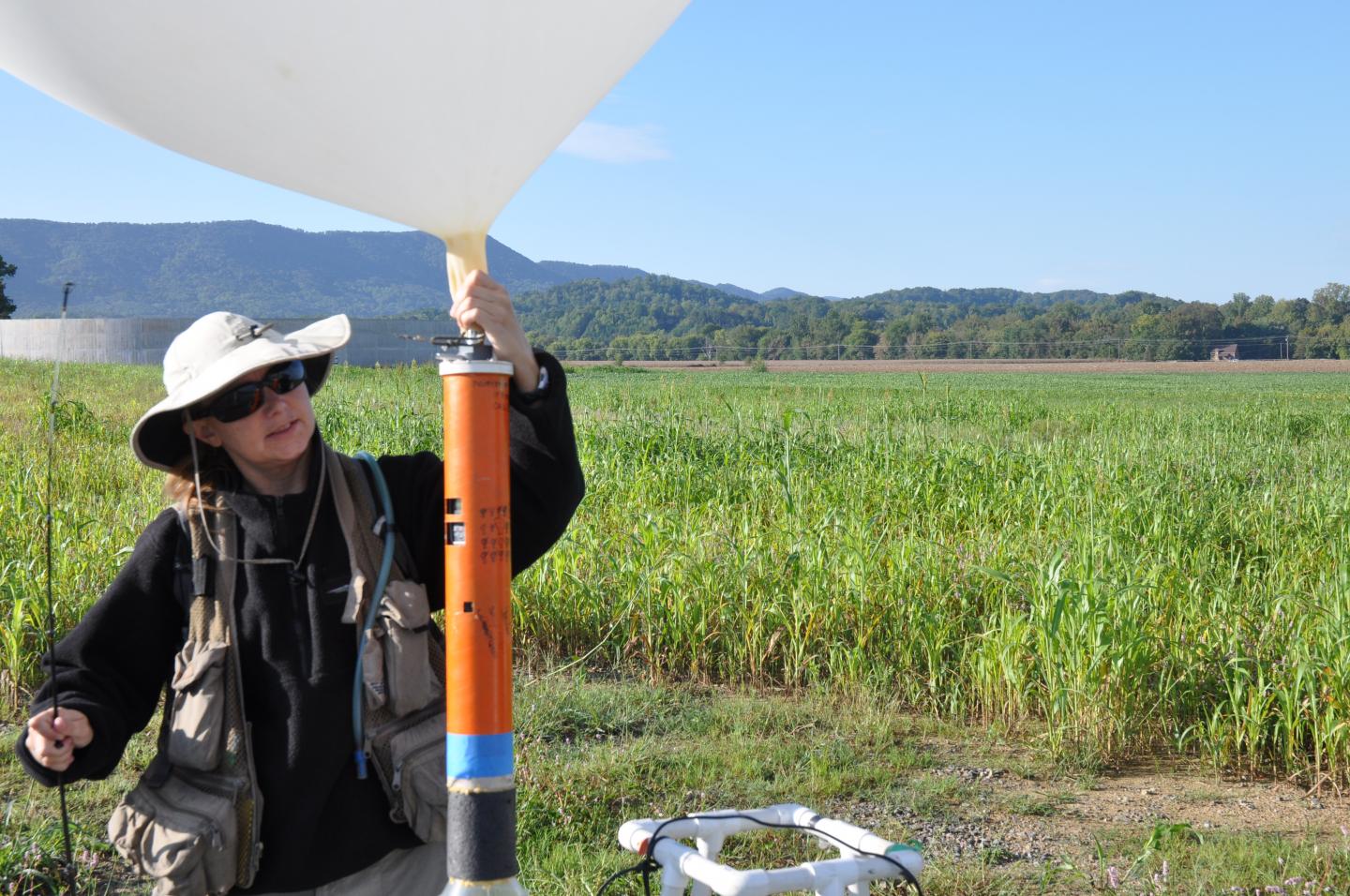
Credit: Photo by M. Emery, courtesy UTIA.
KNOXVILLE, Tenn. — A project to identify and track threatened, endangered and at-risk avian species on U.S. Department of Defense (DoD) facilities has been named the DoD's Environmental Security Technology Certification Program (ESTCP) project of the year for 2016 for resource conservation and resiliency. The effort by a team of University of Tennessee Institute of Agriculture researchers was led by David Buehler, professor in the Department of Forestry, Wildlife and Fisheries. Richard A. Fischer, of the U.S. Army Engineer Research and Development Center, served as the DoD project manager.
ESTCP is DoD's environmental technology demonstration and validation program. The program's goal is to identify and demonstrate cost-effective technologies that address DoD's highest priority environmental requirements.
Unlike humans, birds are not limited to known roads and trails for their primary method of daily transportation. Nor do they heed fences or "no trespassing" signs. They seek out habitats that provide them with desirable food and shelter regardless of the locale, including across the vast expanses of DoD installations. The armed services know the birds are there, but they needed help identifying which species are present and in what numbers. Researchers with the University of Tennessee Institute of Agriculture were up to the task.
The award-winning project, "Demonstration and Implementation of Autonomous Aerial Acoustic Recording Systems to Inventory DoD Installation Impact Areas for Threatened, Endangered, and Species at Risk Bird Populations," used weather balloons to transport an autonomous aerial acoustic recording system (AAARS) to inaccessible areas of DoD installations. The AAARS then recorded vocalizations of avian species and provided tracking telemetry to spatially correlate the audio data to the flight path of the system for the purpose of locating specific species. The goal was also to reliably and safely recover the AAARS. Demonstrations of the project took place at three DoD installations: Fort Riley, Kansas; Fort Bragg, North Carolina; and Jefferson Proving Grounds – Big Oaks National Wildlife Refuge, Indiana.
Use of the AAARS is expected to significantly improve DoD's ability to comply with environmental regulations and legislation, including the Endangered Species Act and the Migratory Bird Rule.
The UTIA team included John Wilkerson, professor of biosystems engineering, as well as staff and students from the Department of Biosystems Engineering and Soil Science and the Department of Forestry, Wildlife and Fisheries.
###
Through its mission of research, teaching and extension, the University of Tennessee Institute of Agriculture touches lives and provides Real. Life. Solutions. ag.tennessee.edu.
For more information on this project, visit this DoD website.
Media Contact
Patricia McDaniels
[email protected]
615-835-4570
@UTIAg
http://ag.tennessee.edu
############
Story Source: Materials provided by Scienmag





